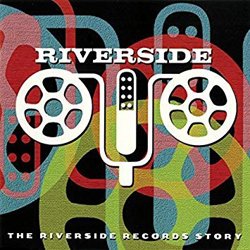Blue Mitchell (trompeta), Wynton Kelly (piano), Sam Jones (contrabajo) y Roy Brooks (batería). extraído del álbum Blue’s Moods (1960) de Blue Mitchell.
Podríamos describir la historia del jazz como el discurrir de un río cuyas aguas nunca son las mismas y que a su paso tiene paradas para desembarcar que simbolizan los diferentes estilos. Por lo tanto, el comienzo de la línea fluvial la tendríamos en el propio nacimiento del jazz en Nueva Orleans a caballo entre los siglos XIX y XX, cuya improvisación colectiva se reflejó sobre todo en la banda del cornetista Joe Oliver a principios de los años veinte. La migración de la población afroamericana hacia el norte en busca de mejores condiciones de vida dio lugar al jazz en Chicago, donde el trompetista Louis Armstrong destacó como primer solista importante a finales de esa misma década, dándole al género una nueva dimensión. Cuando las condiciones para el desarrollo de esta música dejaron de darse en esa ciudad, Nueva York se convirtió en la capital del jazz, donde el swing, la música de baile de las big bands, reinó a lo largo de los años treinta. Sin embargo, la dificultad económica de mantener una gran orquesta y la aparición de jóvenes músicos virtuosos dio lugar al bebop con el saxofonista alto Charlie Parker y el trompetista Dizzy Gillespie, un estilo de grupos pequeños que tocaban una música desbordante destinada a ser escuchada como una forma de arte. Con la decadencia del bebop durante la primera mitad de los años cincuenta, el resurgir del góspel y el blues, y el auge del rhythm and blues, nació una forma de jazz más moderada de vuelta a las raíces: el hard bop.
We could describe the history of jazz as the flow of a river whose waters are never the same and which, as it goes by, has stops to disembark, symbolizing the different styles. Therefore, the beginning of the river line would be in the very birth of jazz in New Orleans straddling the 19th and 20th centuries, whose collective improvisation was reflected mainly in cornetist Joe Oliver’s band in the early 1920s. The migration of the Afro-American population to the North in search of better living conditions gave rise to jazz in Chicago, where trumpeter Louis Armstrong stood out as the first major soloist at the end of that same decade, giving the genre a new dimension. When the conditions for the development of this music ceased to exist in that city, New York became the capital of jazz, where swing, the dance music of the big bands, reigned throughout the 1930’s. However, the financial difficulty of maintaining a large orchestra and the emergence of virtuoso young musicians gave rise to bebop with alto saxophonist Charlie Parker and trumpeter Dizzy Gillespie, a style of small groups that played an overwhelming music intended to be listened to as an art form. With the decline of bebop during the first half of the 1950s, the revival of gospel and blues, and the rise of rhythm and blues, a more moderate back-to-the-roots style of jazz was born: hard bop.

Sin embargo, en el río del jazz las cosas no son tan sencillas, pues sus aguas son turbulentas, está lleno de remolinos, meandros, ciénagas y remansos que esconden arenas movedizas, y se divide en diversos cursos. Al contrario que en la música clásica, donde se pone el énfasis en la interpretación estricta de las partituras, en el jazz lo más importante es la creatividad y el estilo personal de cada músico. Por todo ello, la mayoría de la gente no sabe qué elegir a la hora de empezar a escuchar este género musical.
However, in the river of jazz things are not so simple because its waters are turbulent, it’s full of whirlpools, meanders, swamps, backwaters and hide quicksand, and it splits into different courses. Unlike in classical music, where emphasis is placed on the strict performance of scores, in jazz the most important thing is the creativity and personal style of each musician. For these reasons, most people don’t know what to choose when they start listening to this musical genre.

En este caso tenemos un tema jovial y desenfadado con mucho swing, que te hace olvidarte de tus problemas. El primero en hacer su solo es Mitchell, con frases simples y elocuentes que nos recuerdan su técnica refinada. A continuación entra Kelly con un discurso ligero y espontáneo, y luego improvisa con acordes. Le sigue Jones interpretando notas claras y bien definidas que producen una sensación de solidez, y finalmente vuelve Mitchell para tocar unas pocas frases más y reexponer el tema.
In this case we have a cheerful and carefree theme swinging hard that makes you forget about your problems. The first to solo is Mitchell, with simple and eloquent phrases that remind us of his refined technique. Next Kelly comes in with a light and spontaneous speech, and then jams with chords. Jones follows performing clear, well-defined notes that produce a sense of solidity, and finally Mitchell comes back to play a few more sentences and re-expose the theme.

Translated with the help of DeepL
℗ Riverside Records


Si te ha gustado el tema, quizá querrás escuchar también los anteriores de este álbum:
If you liked the track, you might also want to listen to the previous ones on this album:


Thanks for the links, @fjcalduch
Congratulations @fjcalduch! You have completed the following achievement on the Hive blockchain and have been rewarded with new badge(s):
Your next target is to reach 170000 upvotes.
You can view your badges on your board and compare yourself to others in the Ranking
If you no longer want to receive notifications, reply to this comment with the word
STOPCheck out the last post from @hivebuzz: